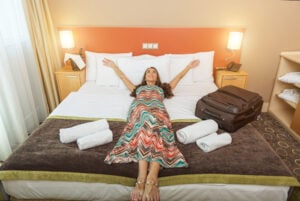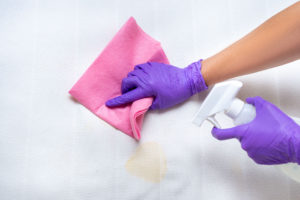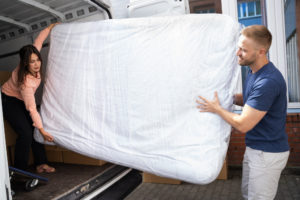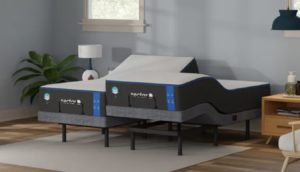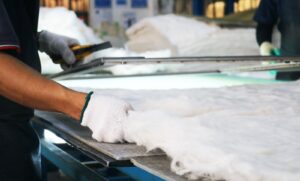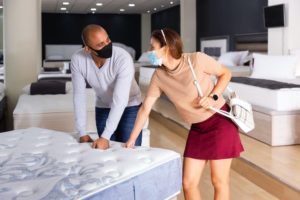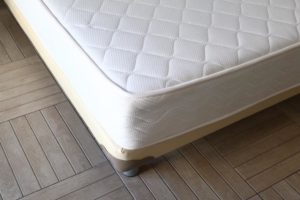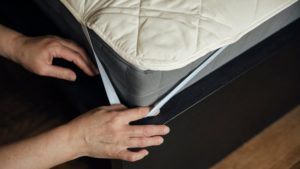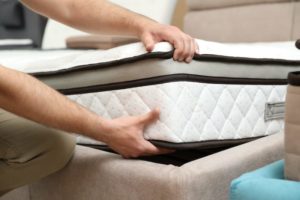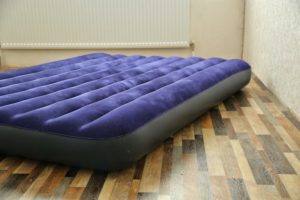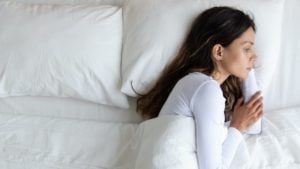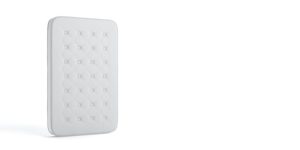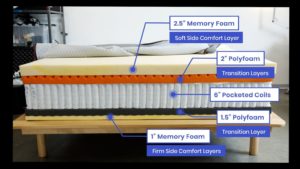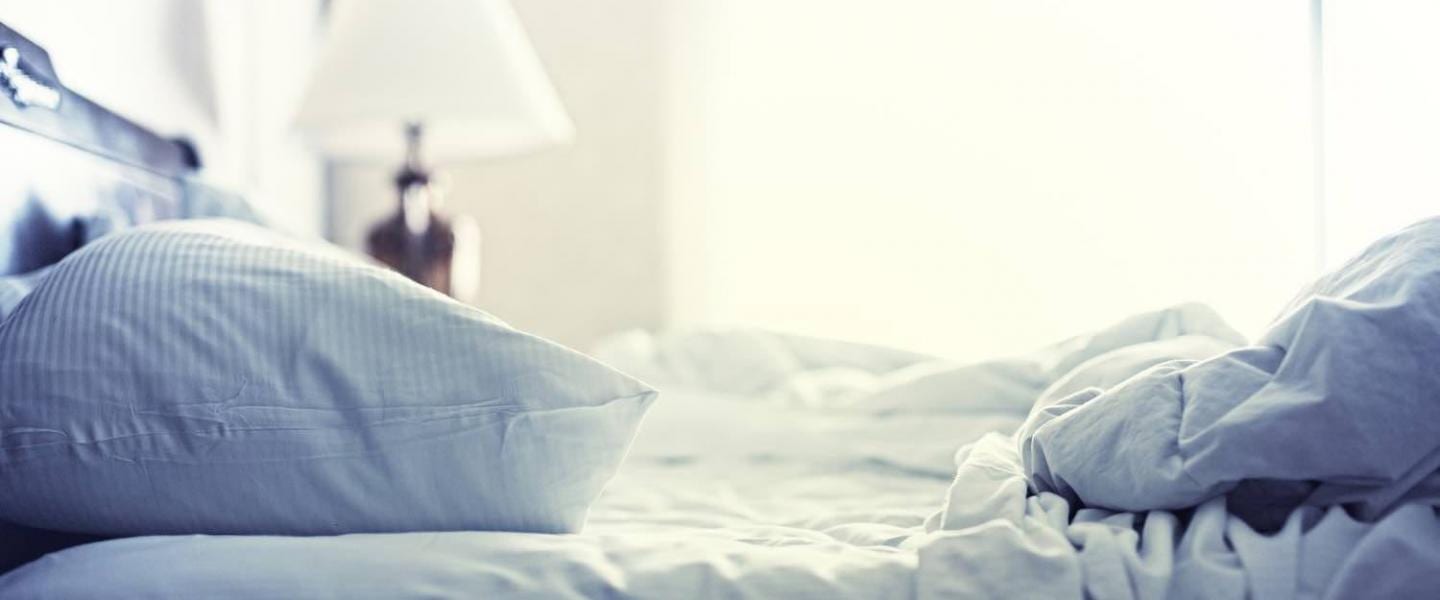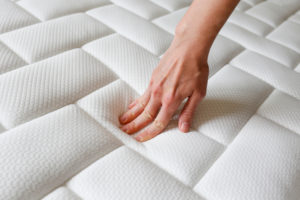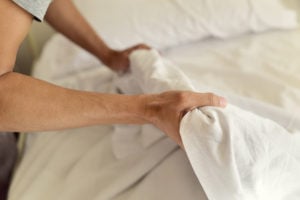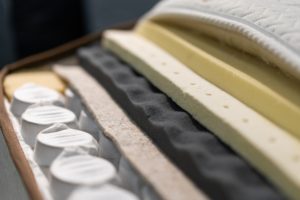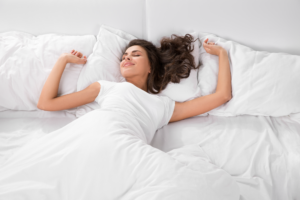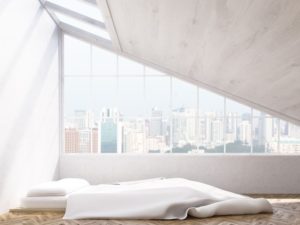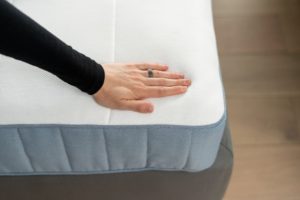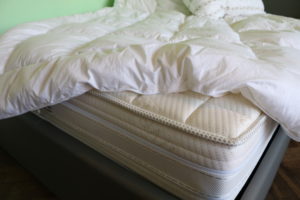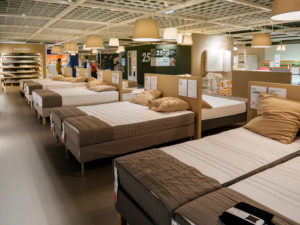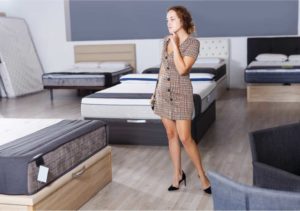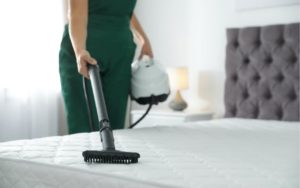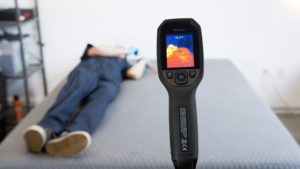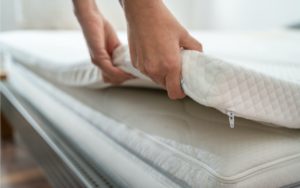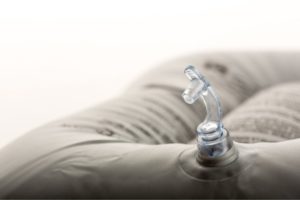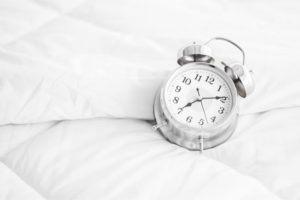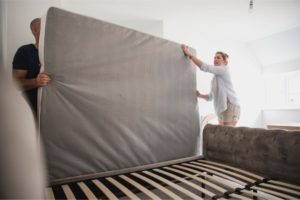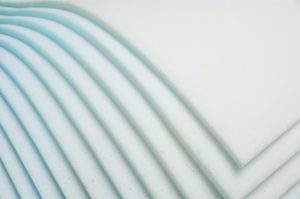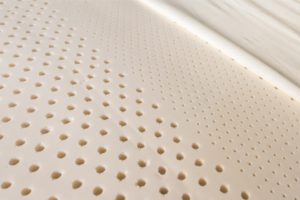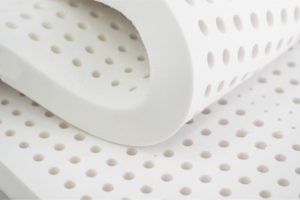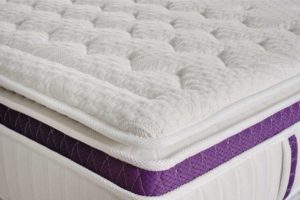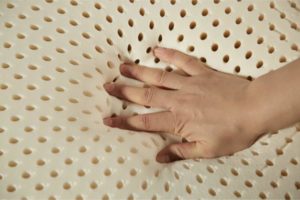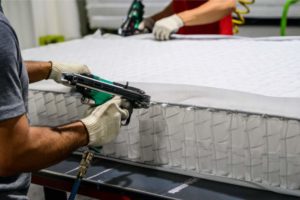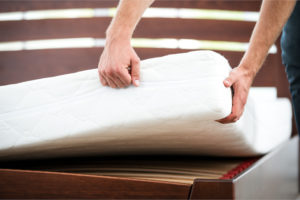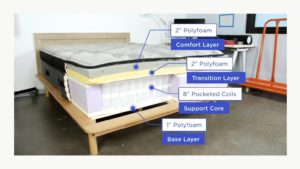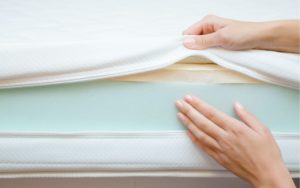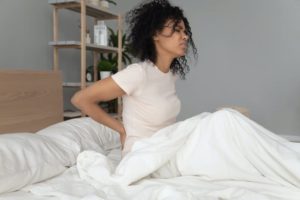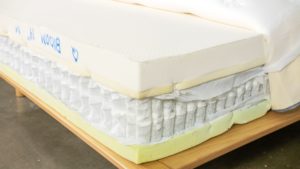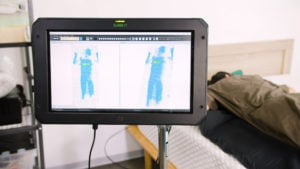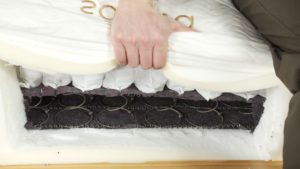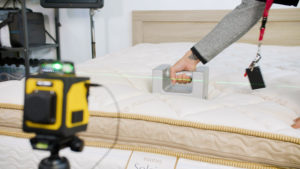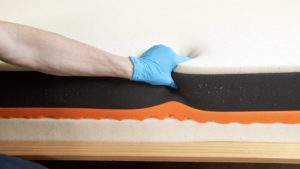Types of Bed Frames
From Sleigh Beds to Canopies
Bed frames play a crucial role in providing stability and durability to your mattress. This piece of furniture not only elevates and supports your mattress, it also contributes to your bedroom’s overall look and feel. Choosing the right bed frame is essential for creating a comfortable and functional sleeping space that complements your personal style.
Factors such as room size, mattress dimensions, frame height, storage features, and personal budget play a vital role in determining the right bed frame for you. By considering these key aspects, you can confidently select a bed frame that ensures optimal support, enhances your bedroom decor, and promotes restful sleep. We’ll explore different bed frame types and delve into essential considerations to help you make an informed choice when shopping for your bed frame.
Let us help you find the perfect bed
Answer a few questions to find the right mattress for your unique needs
What Is a Bed Frame?
A bed frame is a foundational support system designed to elevate and hold a mattress above the floor. Functioning as the backbone of a bed, a frame offers essential benefits beyond lifting the sleeping surface. The primary purpose of a bed frame is to provide stability, so a sleeper’s weight can be distributed evenly. This even distribution of weight aligns the sleeper’s spine while preventing sagging and extending the mattress’ lifespan.
Additionally, bed frames help improve airflow around a mattress, reducing the risk of mold and mildew formation. They also offer an optional storage area underneath, making efficient use of room space. With various styles and materials available, bed frames play a key role in enhancing both sleep quality and bedroom aesthetics for different types of sleepers.
What Are the Different Types of Bed Frames?
Bed frames are available in diverse styles and materials, including metal and wood options. We’ll explore the various types of bed frames, each catering to specific needs. While we’ll cover platform, canopy, sleigh, and other frame types, there are varying colors, materials, and designs available within these categories. For instance, a platform bed frame might range from simple wooden constructs to luxurious upholstered finishes, allowing everyone to find the perfect match for their personal preferences.
Platform
Platform beds typically consist of a solid, flat surface that directly supports the mattress. They often have a low-profile design and eliminate the need for a box spring. Platform beds are sometimes confused with panel beds, which use a series of wooden or metal slats as opposed to a solid support surface.
Platform-style bed frames offer excellent mattress support, preventing sagging and ensuring even weight distribution. They also tend to be easy to assemble and are compatible with many mattress types. This style is well-suited for sleepers who prefer a modern, clean look and desire good mattress support without additional frills. However, their minimalistic design may not appeal to those seeking a more ornate look.
Storage Platform
Storage platform beds offer the practicality of a platform bed with integrated storage solutions. Featuring drawers or compartments built into the frame, they optimize bedroom organization and reduce the need for separate storage units. These beds maintain the stability and mattress support of standard platform beds, though their added features may increase costs and assembly complexity. However, they can be very useful for people living in smaller spaces or those seeking to reduce clutter in their bedroom.
Trundle
Trundle bed frames are a clever space-saving solution, consisting of two separate beds stacked together. The main bed is accompanied by a smaller, wheeled bed that fits underneath the mattress and can be pulled out when needed. Trundle bed frames are typically made of metal or wood, providing adequate mattress support for both sleepers. Trundle beds are ideal for accommodating guests or creating additional sleeping space without taking up much floor area. However, stored trundle beds are usually twin size, so they may not meet everyone’s needs.
Loft
Loft beds are elevated bed frames that utilize the vertical space of a room to increase the available floor space. These beds feature a lofted sleeping platform with open space underneath, offering opportunities for workstations, play areas, or extra storage. Loft beds are popular in small bedrooms, dorm rooms, and studio apartments, where maximizing floor space is crucial. However, because they require a person to climb up into bed, they may not be suitable for individuals with mobility issues.
A popular variation of the loft bed is the bunk bed, an elevated bed frame that consists of two or more beds stacked vertically. They are ideal for shared bedrooms, providing multiple sleeping surfaces without taking up extra floor space.
Sleigh
Sleigh bed frames are characterized by their distinctive, curved headboard and footboard, resembling the shape of a sleigh or scroll. These beds often feature elegant craftsmanship and are commonly made from wood. The construction ensures reliable mattress support, and they come in various sizes to accommodate different mattress types. Sleigh beds’ ornate design can serve as a focal point in the bedroom, but their size and style may not suit minimalist aesthetics.
Canopy
Canopy bed frames have four tall posts, one in each corner and an overhead frame typically connected by crossbeams, creating a canopy-like structure. Historically, these beds were used to offer privacy and keep in warmth during the winter. Nowadays, they add a touch of luxury and elegance to modern bedrooms.
This style of bed frame may be minimalistic or feature intricate designs and is typically crafted from wood, metal, or a combination of both. Canopy beds can transform a bedroom into a sophisticated retreat, but their larger size and opulent appearance may not be suitable for small spaces.
Four-Poster
Four-poster bed frames are distinguished by four vertical posts, one at each corner, which are often adorned with ornamental tops known as finials. The vertical posts can be simple or intricately designed, providing various style options. However, their larger size may be better suited for more spacious bedrooms. A variation is the half-poster, sometimes called a half-canopy or half-tester. This style features tall posts at the head of the bed, while the foot of the bed remains open.
Daybed
Daybed frames are versatile and multifunctional, designed for both seating and sleeping. Resembling a sofa, they feature a backrest and armrests, making them comfortable for lounging during the day. Daybeds can be made from metal, wood, or a combination of materials, and they come in various sizes to accommodate different mattress types. Some models have a trundle bed or under-bed storage. Daybeds are ideal for guest rooms or small living spaces.
Murphy
Murphy beds, also known as wall beds, are space-saving bed frames hinged at one end and secured to a wall or cabinet when not in use. Easily folded up vertically, they maximize floor space, ideal for studio apartments or small bedrooms. Available in various sizes and styles, some include shelves or desks. Murphy beds seamlessly transform a room from a sleeping area to a functional living space, making them perfect for optimizing room functionality and creating a more spacious living environment.
Adjustable
Adjustable bed frames feature an electronically operated base and offer customized sleeping positions by allowing sleepers to elevate the head and/or foot of the bed. They provide reliable support for various sleep positions and are often paired with memory foam or latex mattresses. Preferred by individuals with specific health needs or sleepers seeking enhanced relaxation, adjustable beds promote better sleep and cater to a wide range of sleep preferences.
What to Consider When Choosing a Bed Frame
When selecting a new bed frame, it’s best to begin by thinking about your personal requirements. Factors such as room dimensions, mattress size, desired storage features, and personal budget can help you find the perfect fit.
Room Size
For a functional and cozy bedroom layout, you’ll need to match your choice of bed frame to the size of your room. Before selecting a bed frame, measure your bedroom space using a tape measure. Start by recording the length and width of the available floor area. If you’re considering taller frames like canopy or poster beds, also measure the ceiling height. By taking accurate measurements, you can confidently opt for a bed frame that complements your room dimensions and prevents overcrowding.
Mattress Size
When buying a new bed frame, it’s crucial to consider the size of your current mattress. Match the dimensions of your mattress to the bed frame size to avoid any gaps or overhangs that may affect comfort and aesthetics. Whether you have a twin, queen, or king size mattress, choosing a compatible bed frame ensures a seamless and comfortable sleep surface.
Frame Height
When choosing a bed frame, consider its height to ensure it suits your needs. For taller frames like four-poster or canopy beds, measure your ceiling height to ensure ample clearance. Additionally, if you have mobility issues, it’s important that your sleep surface isn’t too low or too high, so you can comfortably get in and out of bed.
Storage and Features
Think about whether you need extra storage or additional features to enhance your sleeping experience. Look for bed frames with built-in shelving and compartments to keep your bedroom organized and clutter-free. If you value adjustability, opt for frames with remote-controlled technology that allows you to customize your sleeping positions for optimal comfort.
Price
Take into account your personal budget. Determine a comfortable spending range to find a balance between quality and affordability. While bed frames come in various price ranges, investing in a durable and well-constructed frame that fits within your budget ensures a long-lasting sleep setup.

Still have questions? Ask our community!
Join our Sleep Care Community — a trusted hub of sleep health professionals, product specialists, and people just like you. Whether you need expert sleep advice for your insomnia or you’re searching for the perfect mattress, we’ve got you covered. Get personalized guidance from the experts who know sleep best.

